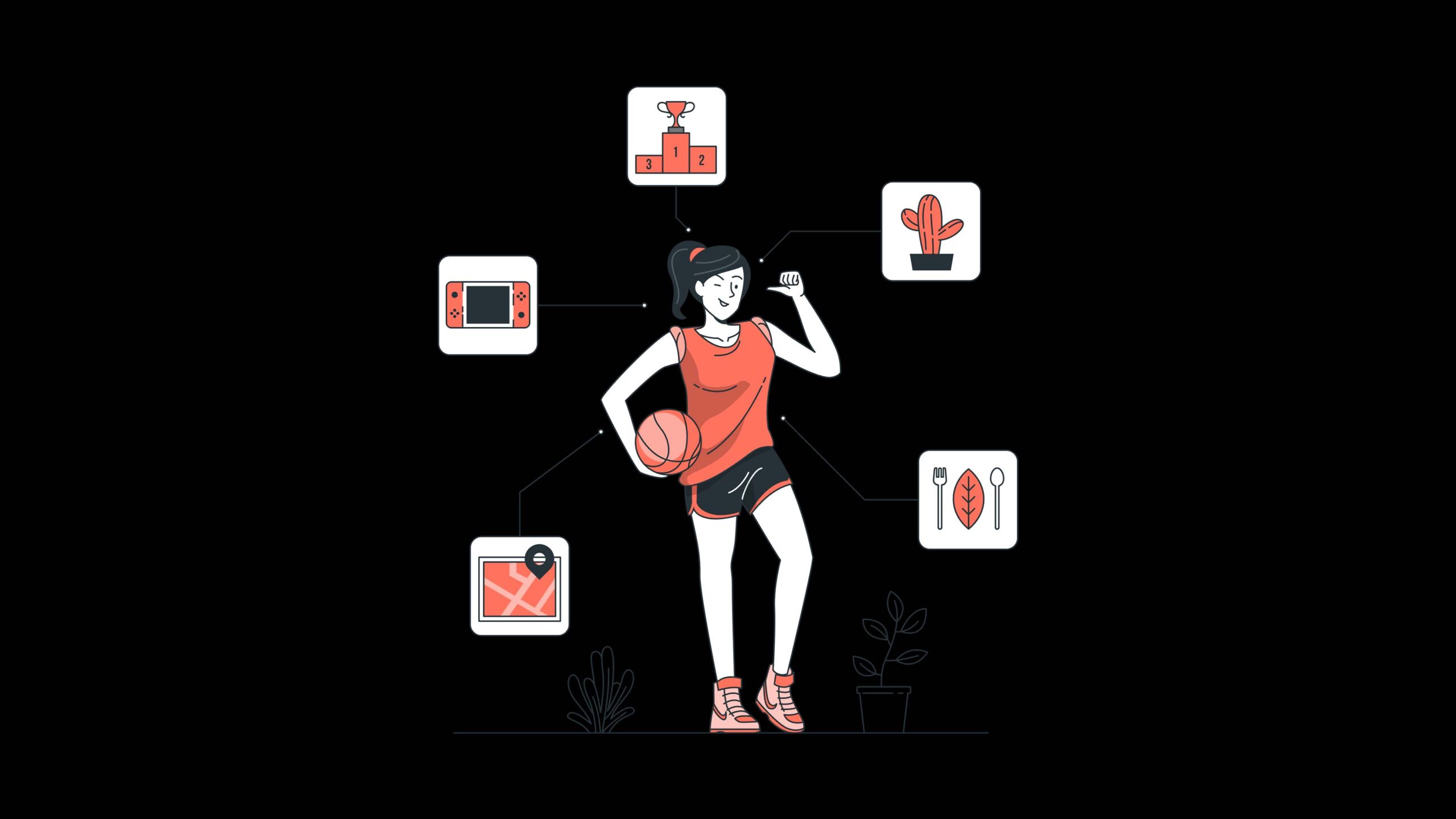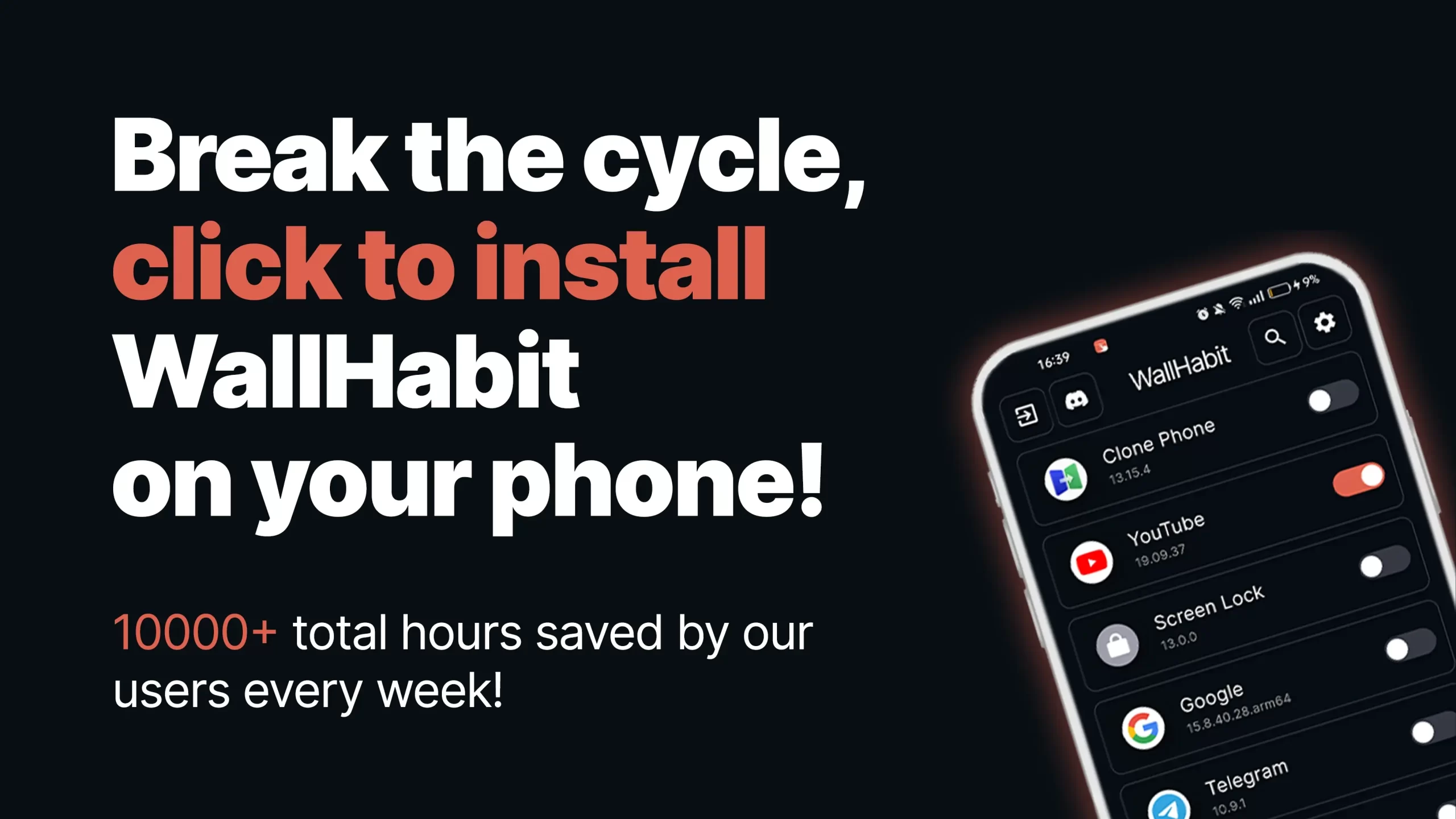Quick solution
- Install WallHabit on your phone
- Disable distractions
- Improve your health with a mindful tech usage
In our fast-paced world, technology is an integral part of our daily lives. However, the constant connectivity can sometimes lead to unhealthy habits. To help you navigate the digital landscape while maintaining a healthy balance, here are ten healthy technology habits you can adopt to ensure your screen time remains productive and positive.
1. Set Clear Boundaries
Establishing boundaries with your technology is crucial for maintaining a balance that supports healthy technology use. Start by setting specific times during the day when you’ll check your devices. For instance, you might decide to avoid screens for the first hour after waking up and the last hour before going to bed. These clear boundaries help reduce screen time and improve your overall well-being.
Additionally, consider creating technology-free zones in your home. Designate certain areas, like the dining room or bedroom, as places where devices are not allowed. This simple step can enhance focus and encourage meaningful, screen-free interactions.
2. Prioritize Quality Over Quantity
Instead of mindlessly scrolling through your feed, focus on consuming content that aligns with healthy digital habits. Choose to read articles, watch educational videos, or listen to podcasts that enrich your knowledge and skills. By prioritizing high-quality content, you make your screen time more purposeful and rewarding.
Moreover, be selective about the apps and services you use. Unsubscribe from notifications and alerts that don’t contribute positively to your daily routine. This strategy not only supports healthy technology use but also ensures that your tech habits align with your personal goals.
3. Take Regular Breaks
Sitting in front of a screen for extended periods can lead to eye strain and mental fatigue. To counteract this, make it a habit to take regular breaks from your devices. A common recommendation is the 20-20-20 rule: every 20 minutes, look at something 20 feet away for at least 20 seconds. This simple yet effective practice is a cornerstone of healthy technology habits.
In addition to short breaks, consider scheduling longer breaks throughout your day to recharge your energy. Use this time to engage in activities that promote healthy technology use, such as exercise or mindfulness practices.
4. Monitor Your Screen Time
Tracking how much time you spend on your devices can help you build better technology habits. Many devices include built-in screen time tracking features that provide insights into your usage patterns. Use these tools to set realistic goals and identify areas where you can cut back.
Reducing excessive screen time is an essential step toward fostering healthy digital habits. For example, aim to limit your social media usage and allocate more time to productive or fulfilling activities.
5. Use Technology Mindfully
Mindfulness is key to establishing healthy technology use. Pay attention to how different apps or activities affect your mood and productivity. If you find that certain apps contribute to stress or distraction, consider limiting your time on them or removing them altogether.
Mindful technology use also involves being fully present during face-to-face interactions. When you’re with others, put your phone away and focus on the conversation. This small but impactful shift reinforces positive technology habits and strengthens personal connections.
6. Maintain a Balanced Digital Diet
A balanced approach to content consumption is vital for cultivating healthy digital habits. Diversify your screen time by including a mix of educational, entertaining, and inspirational content. This variety ensures that your digital experiences are enriching and well-rounded.
Avoid overloading on content that fosters negative comparisons or unrealistic expectations. Instead, choose content that supports your goals and aligns with your values—hallmarks of healthy technology use.
7. Practice Digital Detoxes
A digital detox can be a refreshing way to reset your technology habits. Schedule regular breaks from devices to focus on offline activities, such as reading, exercising, or spending time in nature. These detox periods are essential for maintaining healthy technology use in a world of constant connectivity.
Even a short break from screens can help improve your mental clarity and overall well-being. Use this time to engage in hobbies or connect with loved ones without digital distractions.
8. Be Strategic About Notifications
Notifications can disrupt your focus and lead to unhealthy technology habits. To counteract this, disable non-essential notifications and create a system where you check your messages and updates at designated times.
Strategic notification management is a simple yet effective way to build healthy digital habits. By reducing interruptions, you can reclaim your attention and prioritize what truly matters.
9. Using WallHabit
WallHabit is a valuable tool for fostering healthy technology habits by managing your screen time and promoting intentional usage. One standout feature of WallHabit is its “hold to unlock” function, which introduces a deliberate pause before opening an app. This small but impactful step helps you avoid impulsive behaviors and supports more deliberate technology habits.
WallHabit also helps block shorts and reels—content designed to keep you scrolling endlessly. By reducing access to these distractions, WallHabit promotes healthy digital habits and allows you to focus on what truly matters.
10. Embrace Tech-Free Activities
Incorporating screen-free activities into your day is an essential part of healthy technology use. Hobbies like cooking, playing a musical instrument, or gardening offer a break from digital stimulation and help you develop new skills.
These activities encourage creativity and provide a refreshing counterbalance to screen time. Spending time offline fosters deeper connections and contributes to your mental and emotional well-being, making it a key component of healthy technology habits.
Conclusion
Adopting healthy technology habits is essential for thriving in today’s digital world. By setting boundaries, taking breaks, and using tools like WallHabit, you can build a balanced approach to your screen time. Prioritize healthy digital habits to ensure your tech use supports your goals and enhances your overall well-being.
With these strategies, you’ll be better equipped to navigate the digital landscape mindfully and make the most of your technology while maintaining a healthy balance in your life.

